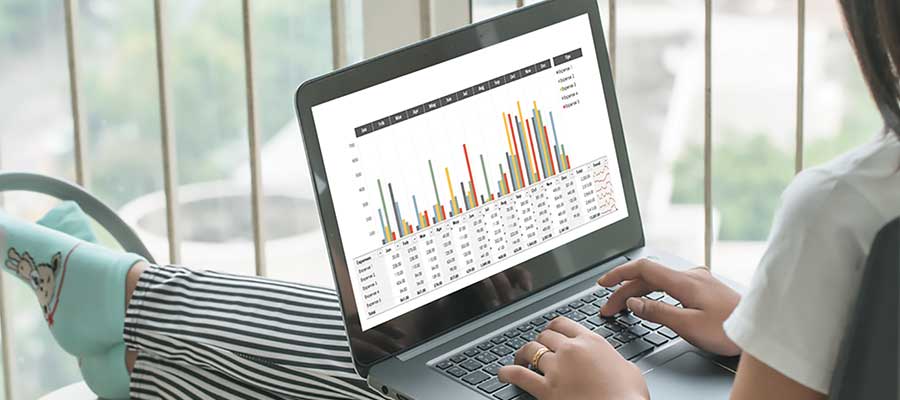Though there are a multitude of really great techniques to find information, the focus for today is the LOOKUP Function in Excel. Our Excel classes cover this topic in great detail so that you can walk away with the greatest understanding of these concepts as possible.
If you are not entirely sure how to work with these lesser known formulas, I recommend going to the formula tab in the ribbon under lookup & reference as highlighted. Or take some online Excel courses to learn more features.

The LOOKUP Function in Excel should be used when you are searching a single row or column for one piece of data in order to retrieve another piece of information within the same position. For example, you know the stock code but want to know what the price of the stock is. You’d use LOOKUP to locate the stock code and retrieve the price. Our Excel classes will show you exactly how to do this.
The VLOOKUP, or vertical lookup function, should be used when you need to find data within the worksheet by row. This is similar to LOOKUP. You would use this to search by stock code to find the price by searching across the row. HLOOKUP, or horizontal lookup, is used when you want to search down columns for information. It starts by searching the first row for the value and then moves down the column to find the second value. This Excel tutorial will examine the three LOOKUP functions to see which is best during certain circumstances.
How Do I Select the LOOKUP Function in Excel?
When LOOKUP is selected from the lookup & reference button a dialogue box will appear asking which argument you will be using vector or array.

Vector is recommended when using the LOOKUP function in Excel. If you would like to use array it is strongly recommended you use the VLOOKUP or HLOOKUP functions instead. The vector form searches a specific vector (either one row or one column range) for a value and then returns a value from that same position in a different vector. The formula for the function is: =LOOKUP(lookup_value,lookup_vector,return_vector)

How Do I Use the LOOKUP Function in Excel For Searching Down Columns?
Example 1: Find the code for “property”
Lookup value = property
Lookup vector = column A
Return vector = column B
=LOOKUP(“property”,A2:A20,B2:B20)
Example 2: What type of account is code 600
Lookup value = 600
Lookup vector = column B
Return vector = column C
=LOOKUP(600,B2:B20,C2:C20)

How Do I Use the LOOKUP Function in Excel For Searching Across Rows?
Example 1: Who didn’t have any sales during quarter 1?
Lookup value = 0
Lookup vector = row 4
Return vector = row 1
=LOOKUP(0,A4:F4,A1:F1)
The LOOKUP Function in Excel is a great function for quickly searching a worksheet to find a specific value.
Excel Classes Make Finding Data Easier Than Ever
When you have a large spreadsheet containing a lot of information, manually scanning the sheet for a specific value can take a lot of time. This is why the LOOKUP feature is so critical. In our Excel classes you will be taught the importance of using this feature, as well as how to apply your newfound skill in your professional career.

No comments:
Post a Comment